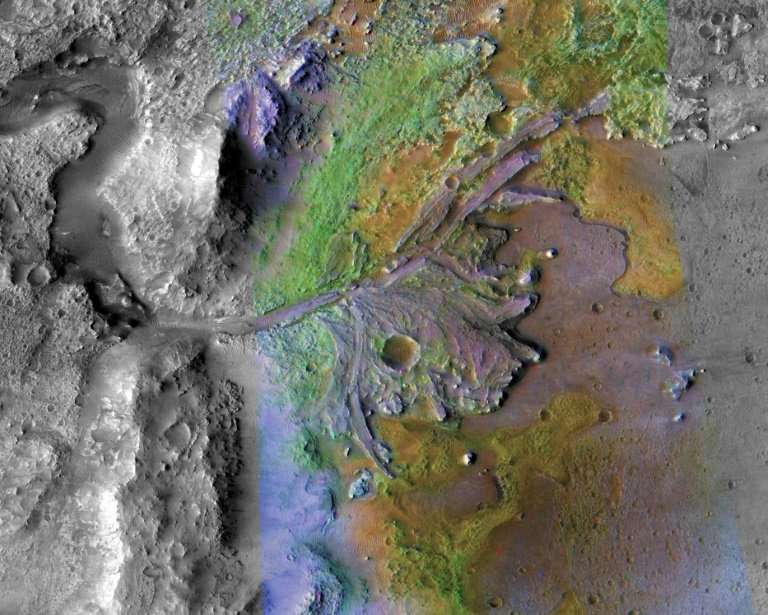NASA picks ancient Martian river delta for 2020 rover touchdown

NASA has picked an ancient river delta as the landing site for its uncrewed Mars 2020 rover, to hunt for evidence of past life on Earth's neighboring planet, officials said Monday.
Even though the Red Planet is now cold and dry, the landing site, Jezero Crater, was filled with a 1,600-foot (500-meter) deep lake that opened to a network of rivers some 3.5 to 3.9 billion years ago.
"The delta is a good place for evidence of life to be deposited and then preserved for the billions of years that have elapsed since this lake was present," Ken Farley, Mars 2020 project scientist at NASA's Jet Propulsion Laboratory, told reporters on a conference call.
Experts believe the 28-mile (45-kilometer) wide basin could have collected and preserved ancient organic molecules and other signs of microbial life.
At least five different kinds of rocks, including "clays and carbonates that have high potential to preserve signatures of past life," are believed to lie in the crater, just north of the Martian equator, the US space agency said in a statement.
Carbonate rock is produced by the interaction of water, atmospheric gases and rock, and leaves clues about habitable environments, said Farley.
Scientists have debated where to land the rover for the past four years, and whittled down their decision from more than 60 possible sites.
The $2.5 billion rover is planned to launch in July 2020, and land in February 2021.
Mars 2020 is designed to land inside the crater and collect samples that will eventually be returned to Earth for further analysis, perhaps by the later 2020s.
Perilous landing
But first, the rover has to make it to the surface intact and upright, dodging a field of boulders, sand traps and the edges of the delta.
Mars 2020 will use the same sky crane landing that successfully delivered NASA's unmanned Curiosity rover to a location called Gale Crater on Mars back in 2012.
Gale Crater, with its many layers of sediment, was chosen to tell the story of how Mars transitioned from a warm, wet planet to the frigid and dusty one it is today.
The landing site of Jezero Crater is different because of its abundant carbonate rocks and what they can hopefully reveal about early habitability on Mars, NASA said.
Instead of having an analytical laboratory on board—like Curiosity has—Mars 2020 is designed to look at rocks on a finer scale, seeing what biosignatures are preserved.
It will then pile them in a cache for further study back on Earth. A separate mission, yet to be defined, would bring the rocks back to Earth.
'Expand our presence'
Knowing more about the ability for life to exist on Mars in the distant past could inform us about how life evolved on Earth.
"Mars is one of four terrestrial planets in the solar system and it actually has the best record of what was going on in the first billion years of planetary formation," said Michael Meyer, lead scientist for NASA's Mars Exploration Program.
"During the same time that life started on Earth, life could have started on Mars," he added.
"Mars had conditions more similar to Earth early on—in the first billion years—so what may have been happening in our solar system that allowed life to start on this planet may also be evident on Mars itself."
Certain features of the Earth—such as plate tectonics which roil the terrain periodically—and flowing water which washes away ancient artifacts, actually make the search to understand early microbial life easier on Mars than on Earth.
"Because there are so many ancient rocks on the surface of Mars, this information is more accessible," said Meyer.
Robotic rover missions are an important part of human space exploration because these tools also help inform NASA's efforts to send people to the surface of Mars sometime in the coming decades.
"Mars is really the obvious place, after the Moon, to go and expand our presence in deep space," said Thomas Zurbuchen, associate administrator of NASA's science mission directorate.
NASA has vowed to send people to Mars by the 2030s, but industry experts say it could take longer—at least 25 years from now—before humans could survive on the Red Planet.
© 2018 AFP





















